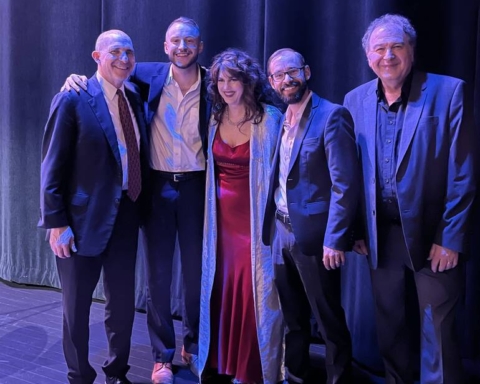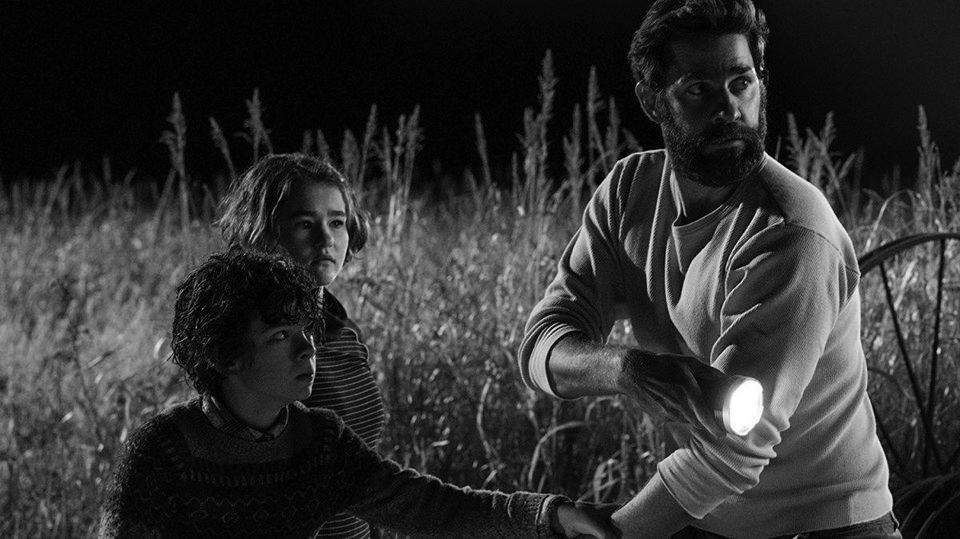John Krasinski’s “A Quiet Place” is a masterful psychological thriller, offering a surreal depiction of unprecedented familial bonds. It’s a commentary that, through a CGI-boosted fantasy, shows what parents will do for their kin and the obligatory roles of the family dynamic in times of survival.
Krasinski stars as the lead role, Lee – alongside Emily Blunt, his off-screen wife, who plays Evelyn – with the couple first introduced in a seemingly post-apocalyptic setting. Viewers are first introduced to the Abbott family, barricaded inside a run-down department store within an entirely desolate town. There’s no sign of life outside the five-person family. At first, confusingly, the family communicates through American Sign Language – using lulled, delicate movements, whispers and tiptoes to navigate.
As the plot unfolds and the family travels barefoot from center town to their country home, it becomes obvious through sign exchanged that the family truly is the town’s only trace of life – and that precious life itself is threatened.
Back in their home, the plot’s main setting, bunker-style living quarters are adorned with sentiments of what was once a comfortable living space: newspaper-plastered walls, dried flower bouquets and board games assembled from gathered knickknacks.
These adornments can’t change the reality that Krasinski skillfully exposes bit by bit in the plot’s development: An unknown presence is preying on the family, and any other noise-capable being for that matter. Equipped with fluency in ASL (due to a deaf eldest child, Regan), the Abbotts silently navigate their daily to-dos in the country capes that envelop their fragile existence. Those mountains, their vastness, hold their predator – and the drop of a lamp, shatter of a glass or peep of a voice begs their attack.
Interestingly, the film boasts a modest 10 minutes of dialogue from start to finish, with ASL-subtitled conversation and shifts between white noise to total silence. This gives viewers an understanding of what characters’ chilling viewpoints are being experienced: Interactions between Lee, Evelyn and Marcus, the son of the family, feature subtle background noise, while viewers are alerted of Regan’s experiences through film completely devoid of sound.
The movie offers more than an engaging look at how an ordinary family ensures survival in inconceivable circumstances through sign, though; it shows the raw, but unbreakable force that binds family. Lee and Evelyn continuously go to bat for their children, despite Evelyn being pregnant throughout the entire movie – another key component to the plot’s development that unravels with subtle mobile hangings and “bump” reveals. Clearly, a birth-induced screech won’t help the family’s case from the get-go, and so, an otherwise beautiful moment of life is robbed from the family and creates an early-on point of anxiety for the Abbotts and viewers alike.
Too, the parental duo is aided by the equally cunning innovation of their children – who grow in their appreciation of the parental role, as they see the physical and mental tolls of their parents’ dedication to survival.
Through the Abbotts’ struggle, viewers grow an appreciation for the family’s immense love for one another, likely thinking of their own limitations with regard to protecting family. It’s in these cinematic trials that Krasinski creates something beautiful: empathy, compassion and, even in a Sci-Fi depiction, relatable plot development.
“A Quiet Place” questions where we, as humans, go in times of total destruction and provides a clear-cut answer that, in hard times, we find solace in those we love—even if feeling that love means death.

McChesney and Foti Bring Jazz and Broadway to St. Bonaventure
Photo and writing by Joseph DeBell The Rigas Family Theater at the





